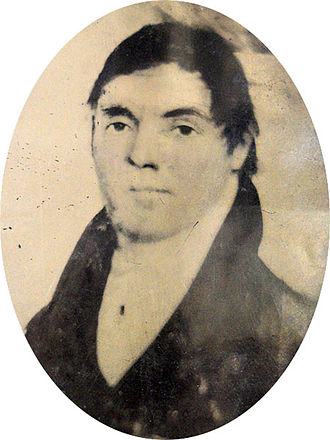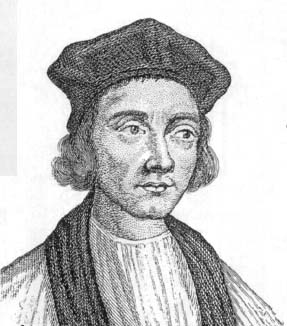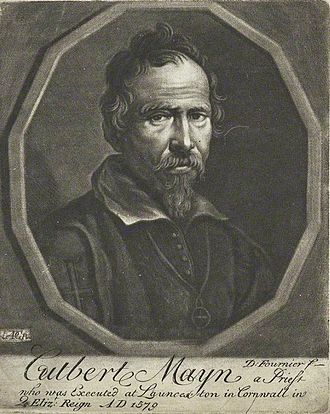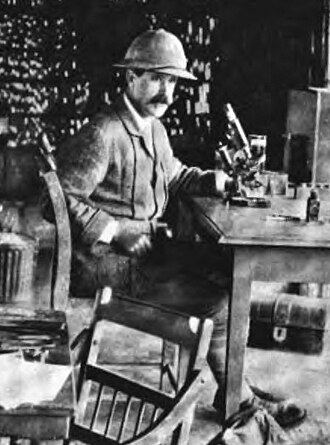Discover Your Roots
SIGN UPDiscover Your Roots
SIGN UPCuthbert is a masculine given name of English origin, meaning "Brilliant." This name has a rich historical significance, with notable figures such as Cuthbert of Lindisfarne and Cuthbert Constable making their mark in various fields. The name has also been associated with influential individuals like Cuthbert Mayne, an English Roman Catholic priest and martyr, and Cuthbert Collingwood, a Royal Navy vice admiral renowned for his role in the Battle of Trafalgar. Additionally, Cuthbert has made its way into fiction, with characters like Cuthbert Allgood in Stephen King's Dark Tower series and Cuthbert Binns from the Harry Potter series. The name Cuthbert carries a sense of brilliance and distinction, reflecting the notable achievements of those who have borne it throughout history.

Cuthbert "James" Grant (1793 – July 15, 1854) was a prominent Métis leader who played a significant role in the Pemmican War during the early 19th century as an employee of the North West Company.Grant was born in 1793 at Fort de la Rivière Tremblante, where his father, Cuthbert Grant Sr., was a manager for the North West Company. His mother was Métis, and Grant's upbringing was immersed in the fur trade culture. At the age of 19, he joined the North West Company and soon became a recognized leader of the Métis people, particularly during the tense rivalry between the Nor'westers and the Hudson's Bay Company.Grant's leadership led to his appointment by Sir George Simpson to head a Métis settlement, initially known as Grantown and later renamed St. François Xavier. He also played a pivotal role in the agricultural development of the area, evidenced by his construction of a watermill and later a successful windmill.Throughout his life, Grant was involved in various roles, from leading the defence of the Red River Colony to serving as a sheriff and magistrate in the District of Assiniboia. He married three times and had numerous children, leaving behind a lasting legacy.Grant's contributions are commemorated through Grant Avenue in Winnipeg and the Cuthbert Grant rose, developed by Agriculture Canada in 1967. Additionally, he has been officially recognized as a member of Clan

Cuthbert Tunstall (1474 – 18 November 1559) was an influential figure in English history, serving as Bishop of Durham during the reigns of Henry VIII, Edward VI, Mary I, and Elizabeth I. Born in Hackforth near Bedale in North Yorkshire, Tunstall overcame his illegitimate birth to become a renowned humanist, bishop, diplomat, and royal adviser. He studied at Balliol College, Oxford, and the University of Padua, where he excelled in mathematics, theology, and law, and became proficient in Greek and Hebrew. Tunstall's career saw him hold various prestigious positions, such as Master of the Rolls, Dean of Salisbury, and Lord Keeper of the Privy Seal. He was involved in diplomatic missions, negotiating with notable figures like Erasmus and the Holy Roman Emperor Charles V. Tunstall's stance on religious matters evolved over time, as he initially opposed the translation of the Bible into English and later accepted Henry VIII as the head of the Church of England. Despite his firm adherence to Roman Catholic doctrine, he faced challenges during the English Reformation and was imprisoned in the Tower of London. Tunstall's life and contributions offer valuable insights into the religious and political turmoil of the period.

Cuthbert Mayne (c. 1543–29 November 1577) was an English Catholic priest who became the first of the seminary priests trained on the Continent to be martyred. Born in Youlston, near Barnstaple, Devon, he was educated at Barnstaple Grammar School and Oxford University. After his conversion to Catholicism, Mayne was ordained as a priest in 1575. He joined the English mission and posed as a steward in Cornwall. However, he was eventually arrested and imprisoned at Launceston Castle. During his trial, Mayne refuted the charges against him, but was found guilty of high treason and sentenced to be hanged, drawn, and quartered. His execution was delayed due to legal disputes. Despite his unjust persecution, he remained steadfast in his faith, responding with "Deo gratias." Mayne was beatified in 1886 and canonized as one of the Forty Martyrs of England and Wales in 1970, honoring his sacrifice for his religious beliefs.This summary introduces Cuthbert Mayne, providing an overview of his life, religious conversion, missionary activities, arrest, trial, and ultimate martyrdom. It maintains a neutral and informative tone, presenting the historical context and significant events related to Mayne's life.

Cuthbert Christy (1863 – 29 May 1932) was an English medical doctor and zoologist known for his extensive explorations of Central Africa during the early 20th century. His significant work on sleeping sickness and the Christy Report on slavery in Liberia in the 1920s are noteworthy contributions to public health and human rights. Christy's early years were marked by his education at Olivers Mount School and the University of Edinburgh, followed by extensive travels in South America and the West Indies. His expertise as a naturalist led to his selection for a British government commission to investigate sleeping sickness in Uganda, where he conducted vital research to map the disease and its vectors. Christy's African travels extended to the Congo Free State, Ceylon, Uganda, East Africa, Nigeria, the Gold Coast, the Cameroons, the Belgian Congo, and the Sudan. His work during World War I, exploration of the Bahr el Ghazal in South Sudan, and leadership of a Natural History Museum expedition to explore the Tanganyika lakes further solidified his legacy as a dedicated explorer and researcher. In 1929, Christy's involvement in the Christy commission in Liberia shed light on forced labor practices, culminating in a report submitted to the League of Nations that exposed the egregious conditions faced by laborers. Cuthbert Christy's remarkable career reflects his unwavering commitment to advancing medical knowledge and advocating for social justice in Africa.

Cuthbert Ormond Simpkins, II, born on August 20, 1947, in Chicago, Illinois, is a renowned physician, biographer, and inventor recognized for his extensive work in shock and violence prevention. Simpkins' upbringing was heavily influenced by his parents' involvement in the civil rights movement, shaping his early interest in science and medicine. He pursued his education at Amherst College and Harvard University, where he obtained his medical degree and completed his biography of jazz musician John Coltrane. The biography, published in 1975, received acclaim for its portrayal of Coltrane's emotional impact through narrative simulation. Simpkins later pursued a successful surgical career, achieving the rank of Commander in the United States Navy and making significant contributions to the field of trauma surgery. He faced challenges and retaliation during his tenure at D.C. General Hospital, leading to a legal battle that resulted in the removal of his name from the National Practitioner's databank. Simpkins' notable achievements include the design and establishment of the Violence Intervention Program (VIP) at the R. Adams Cowley Shock Trauma Center in Baltimore. His work continues to impact the medical and literary spheres, solidifying his influential legacy in both fields.
All images displayed on this page are sourced from Wikipedia or Wikimedia Commons.We use these images under their respective Creative Commons or public domain licenses. Wherever applicable, author attributions and license information are provided. If you believe an image is used incorrectly or outside its license terms, please contact us so that we can review and correct the issue.